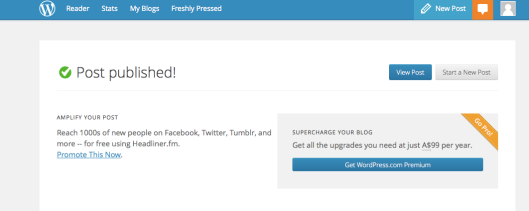Tags
Facebook, Jay Weatherill, Labor, Liberal, Likes, Science, Steven Marshall, YouTube
So, I’m a bit of a science buff… Ok, a lot of a science buff. I subscribe to about 14 different science channels on YouTube, and one of my favourites, Veritasium, made a very interesting video about social media and the power/value of ‘likes’.
In his video, Veritasium describes how he paid Facebook to promote his mirror page to engage his fans. It didn’t turn out so well. The Veritasium Facebook page did grow; at an alarming rate actually. What didn’t go so well was that the ‘likes’ that he was receiving were in-genuine. The algorithm that Facebook is currently built on limits the reach a post will get, depending on the level of interaction the post initially gets. The video explains the mechanism much better than I. To test the value of ‘likes’ on Facebook, Veritasium set up a fake Facebook profile: MyVirtualCat then paid to promote the page. The results were quite surprising.
I thought it would be interesting to see if the same sort of thing is happening with our local politician’s Facebook pages. I decided to look at the two major parties’ leaders.
https://www.facebook.com/StevenMarshall2014
https://www.facebook.com/JayWeatherillMP
I looked at Mr Weatherill’s page first: With just over 8000 likes on the page (this will probably have changed by the time people read this article) and an average interaction level of about 350-400 likes per-post, Jay’s page received steady and regular traffic and engagement with his page. His page was most popular in early January and is most popular in Adelaide. The ‘most popular’ section is the most dubious to me, because it only includes the city of people that are ‘talking about this’ (TAT). ‘TAT’ is Facebook speak for ‘most engagement’. Of Jay’s 8000 Facebook likes, his page only has 447 people ‘TAT.’ There is a very strong correlation between the amount of engagement his posts receive and the amount of TAT. Could there really be 7500 Facebook users that have ‘liked’ Jay’s page without any intent to engage with it? It’s really hard to tell without access to the statistics section of the page.
I looked at Mr Marshall’s page next: Steven’s page has just shy of 13000 likes. Strangely, his page receives less engagement than Jay’s, with only 200-350 likes on average per post. Steve’s page had some real ‘hits’ with some posts and some total misses with others. Interaction seemed sporadic and fairly unpredictable. Steven’s page was most popular during early March and is most popular in Adelaide too. Strangely, Steve’s page only has 148 people ‘TAT’. So Steven’s page had a far lower rate of interaction, but a much broader base to work with. Could Steven Marshall have 12500 fake likes too? Once again, it’s hard to tell without access to the raw data.
One important distinguishing feature between the two profiles is the age of the audience engaging with each page. Jay: 25-34 years old Marshall: 35-54 years old. Could the real deciding factor between engagement of audience be age? I don’t think so. The reason I don’t think so is because of the discrepancy of ‘likes’ and actual engagement. Both pages had very tight correlations between their TAT’s and post engagement.
Are there any conclusions to draw from this very unscientific analysis? Yes. Firstly, it’s important for politicians (media teams) to ruthlessly and meticulously delete disengaged ‘likes’. Simply having lots of likes won’t get any meaningful or regular engagement from the public. Social media teams really need to be aiming for quality of interaction rather than total likes. It’s also not a very good indicator of election results. Being popular on the internet can be a powerful tool for any politician, but having meaningful engagement means that the message is heard. The most lasting message that social media teams should pay attention to: Paying for Facebook likes may hurt your campaign.
Can I take anything away from this? Yes, it’s time for another ‘friend cull’.
A follow up video about how Facebook works that’s also worth a watch is here.
Other cool Science YouTube Channels:
ASAP Science https://www.youtube.com/channel/UCC552Sd-3nyi_tk2BudLUzA
Chris Hadfield https://www.youtube.com/channel/UCtGG8ucQgEJPeUPhJZ4M4jA
IFLSience https://www.youtube.com/channel/UCvOTgnW7oj9ZWDd2y5TEApw
Minute Physics https://www.youtube.com/channel/UCUHW94eEFW7hkUMVaZz4eDg
VSauce https://www.youtube.com/channel/UC6nSFpj9HTCZ5t-N3Rm3-HA
Video From Space https://www.youtube.com/channel/UCVTomc35agH1SM6kCKzwW_g
*Sigh*

